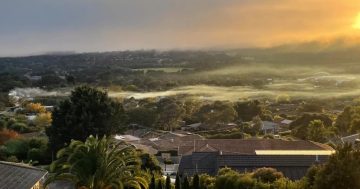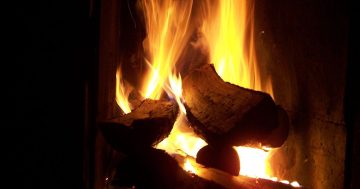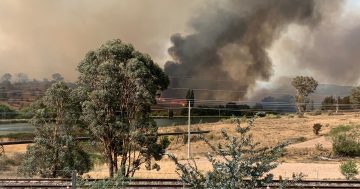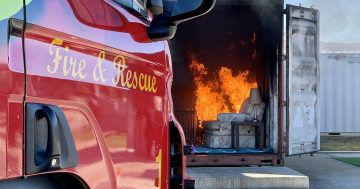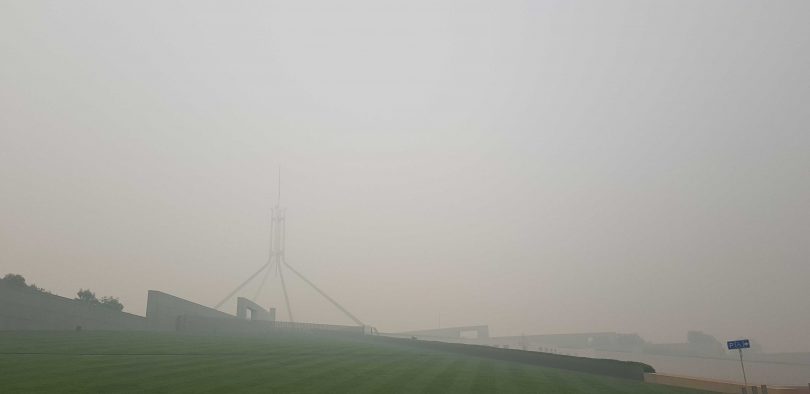
Parliament House shrouded in smoke on 1 January 2020. File photo
The ACT Government is flagging greater protections from smoke pollution and better air quality monitoring and communication ahead of the next bushfire season.
Minister for the Environment Rebecca Vassarotti will deliver a smoke and air quality strategy by October that will incorporate several actions recommended by the Royal Commission into National Natural Disaster Arrangements.
The ACT Air Quality Report 2020 released on 6 July found the pall of smoke from the Black Summer bushfires that settled over the Territory significantly impacted air quality in the ACT.
The report shows that in January 2020, smoke pollution peaked and ozone levels were higher than in other months of the year.
A study published in the Medical Journal of Australia found more than a third of Canberra’s summer was spent with air quality levels above hazardous, and the national capital regularly had the world’s worst air quality during the 2020 bushfires.
The air quality in Canberra reached 22 times the hazardous threshold on New Year’s Day.
The study estimated that in the ACT, 229 people were admitted to hospital – 82 for cardiovascular problems and 147 for respiratory problems – while 89 people attended the emergency department because of asthma-related issues. Thirty-one may have lost their lives as a result.
The 2020 air quality report says ozone concentrations met the National Environment Protection (Ambient Air Quality) Measures (NEPM) standards 99 per cent of days during 2020 while increased levels of carbon monoxide and nitrogen dioxide, caused by the bushfires, met the NEPM standards 99.5 per cent of days.
Ms Vassarotti said smoke and dust storm events were likely to increase due to climate change and a rise in the frequency and intensity of bushfires.
“We need to take action against climate change; otherwise, we will see more intense and frequent occurrences such as dust storms and bushfires and ultimately have poorer air quality in the ACT. As part of this response, the ACT Government is preparing a smoke and air quality strategy to improve air and health outcomes,” she said.
The report also found that wood heater smoke continues to be an environmental and health issue during the winter.
The strategy will include air quality standards for outdoor workers and measures to protect people, especially vulnerable people, from smoke, including the ability of public and private facilities to provide shelter and refuge.
It will boost the amount and quality of indoor and outdoor air quality monitoring, data, and information given to the public.
While the ACT already has a number of policies and programs to limit the number of wood heaters and impacts of smoke, the strategy will also likely have more measures to tackle the perennial issue.
Wood heater emissions exceeded the NEPM standards on 13 days between mid-May and early August 2020. This is an increase from two days exceeding NEPM standards in 2019 and one day in 2018, likely due to more people staying at home during the COVID-19 pandemic.
“Woodburning smoke is made up of a mixture of gases and fine particles which can be harmful to the environment and the health of people, especially those with heart or lung diseases,” Ms Vassarotti said.
Government measures include up-to-date reporting and public health advice through ACT Health’s Air Quality Health Advice Portal; the regulation of the sale and supply of firewood; the regulation of wood heaters sold in the ACT to ensure they meet Australian Standards for emissions and efficiency; and the wood heater replacement program to replace old inefficient wood heaters with high-efficiency alternatives.
The annual Burn Right Tonight community education campaign reminds ACT residents how to use wood heaters correctly to minimise air pollution.
Wood heaters are also banned in new development areas where planning studies show that they would adversely impact air quality.
The government has taken this approach in the Molonglo Valley (except Wright) and previously with the suburbs of Dunlop and East O’Malley.












